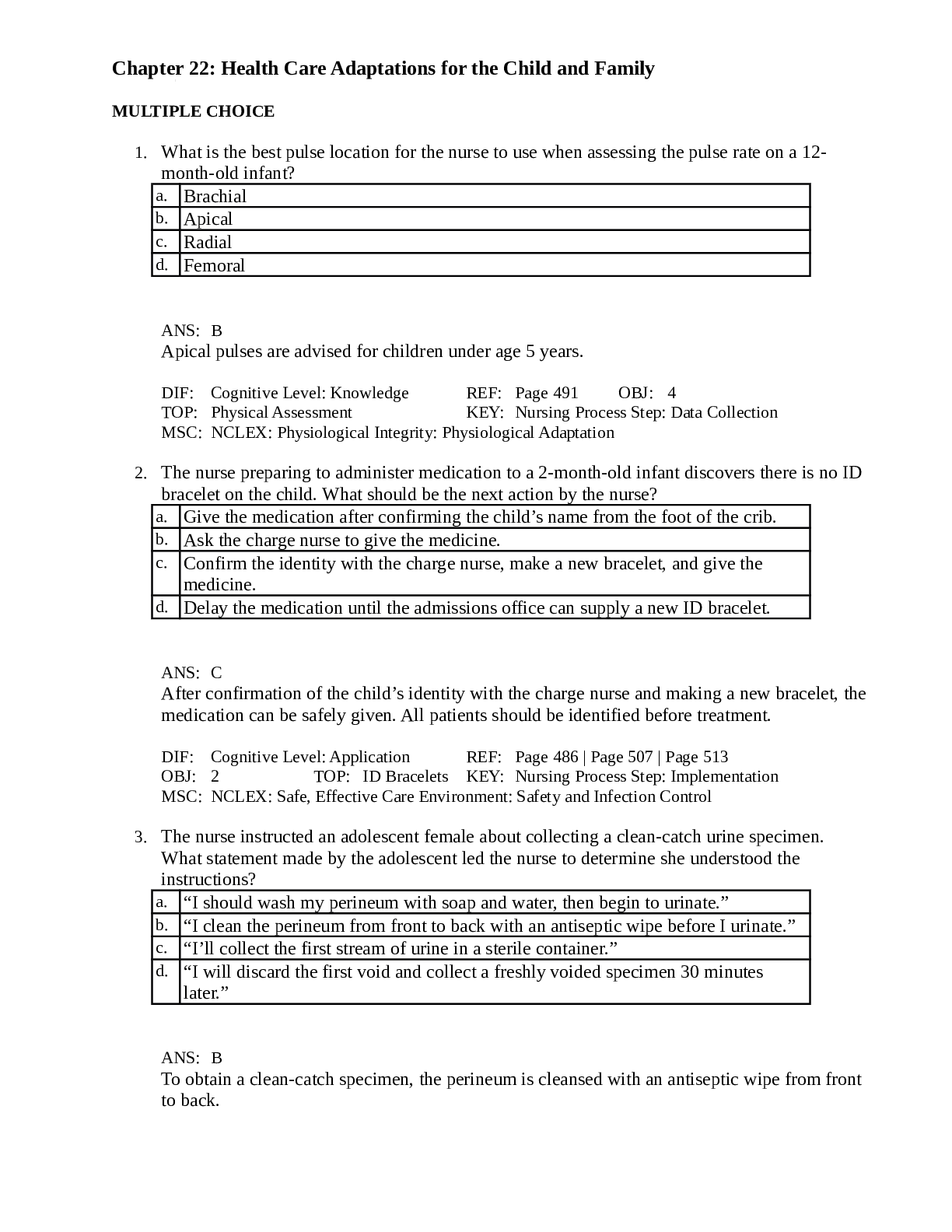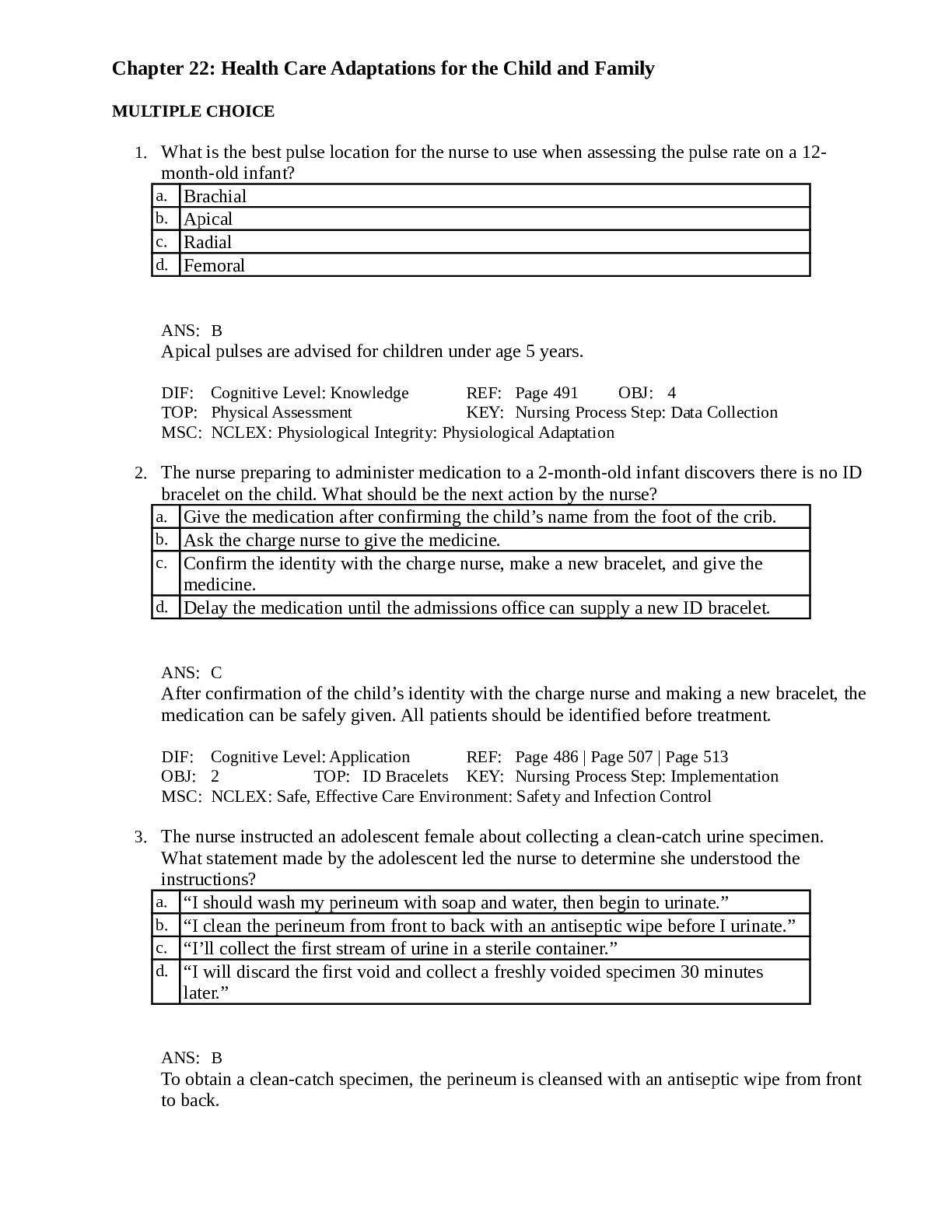Health Care Adaptations for the Child and Family (Chapter 22)
Course
Music
Subject
Chemistry
Category
Questions and Answers
Pages
12
Uploaded By
ATIPROS
Preview 4 out of 12 Pages


Download all 12 pages for $ 7.50
Reviews (0)
$7.50
